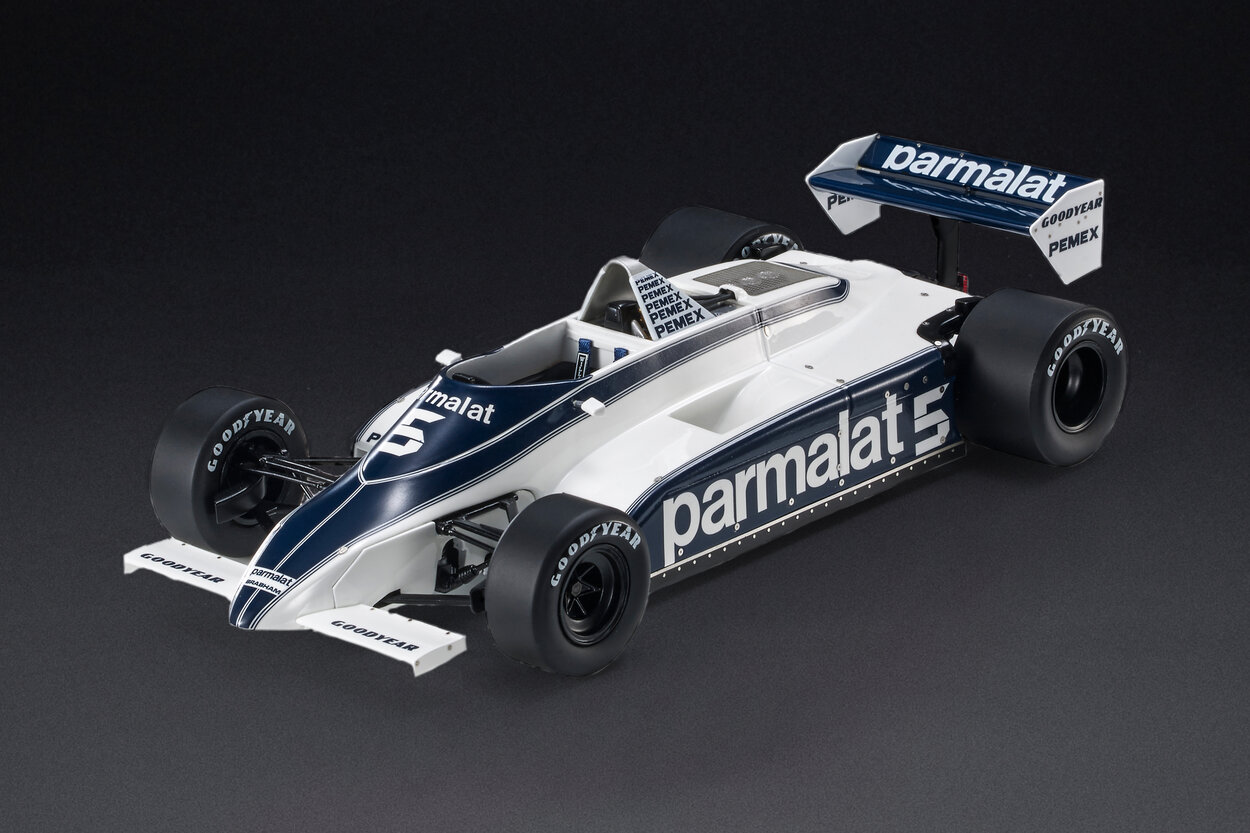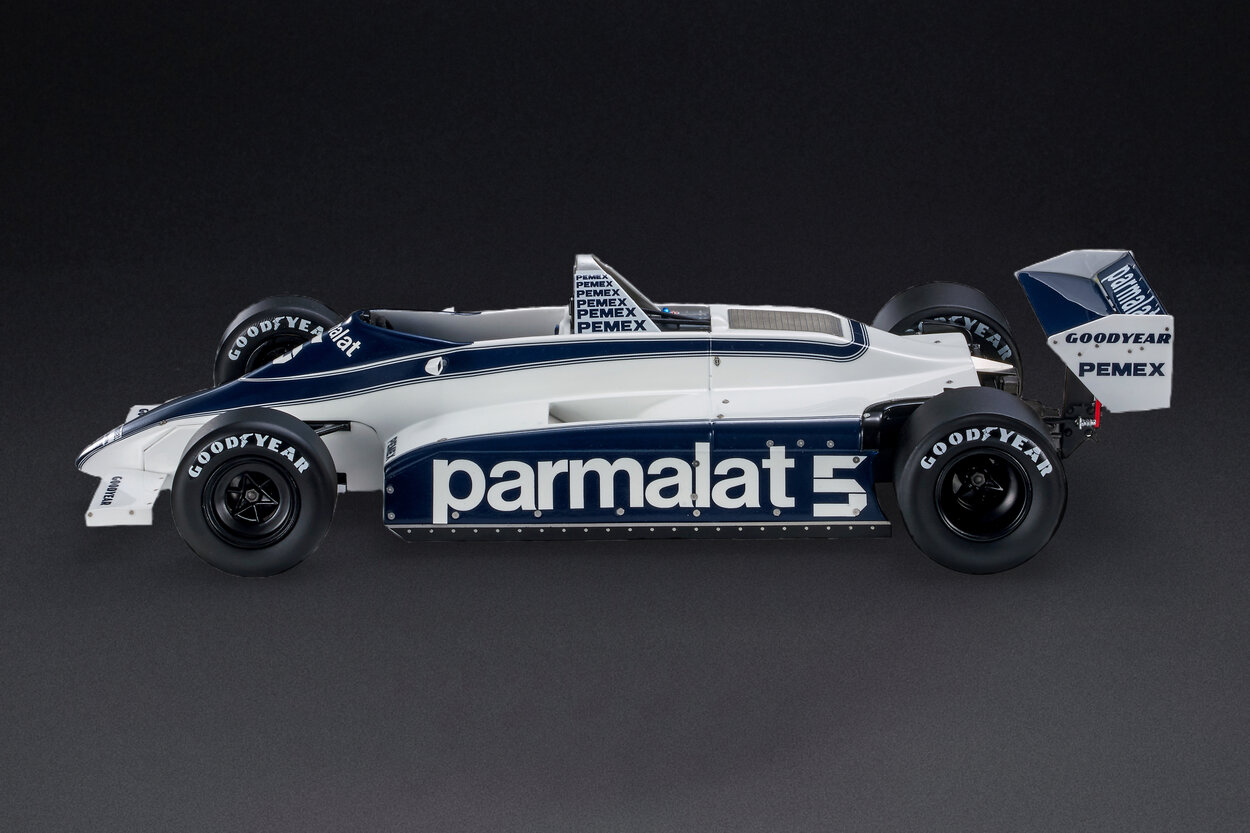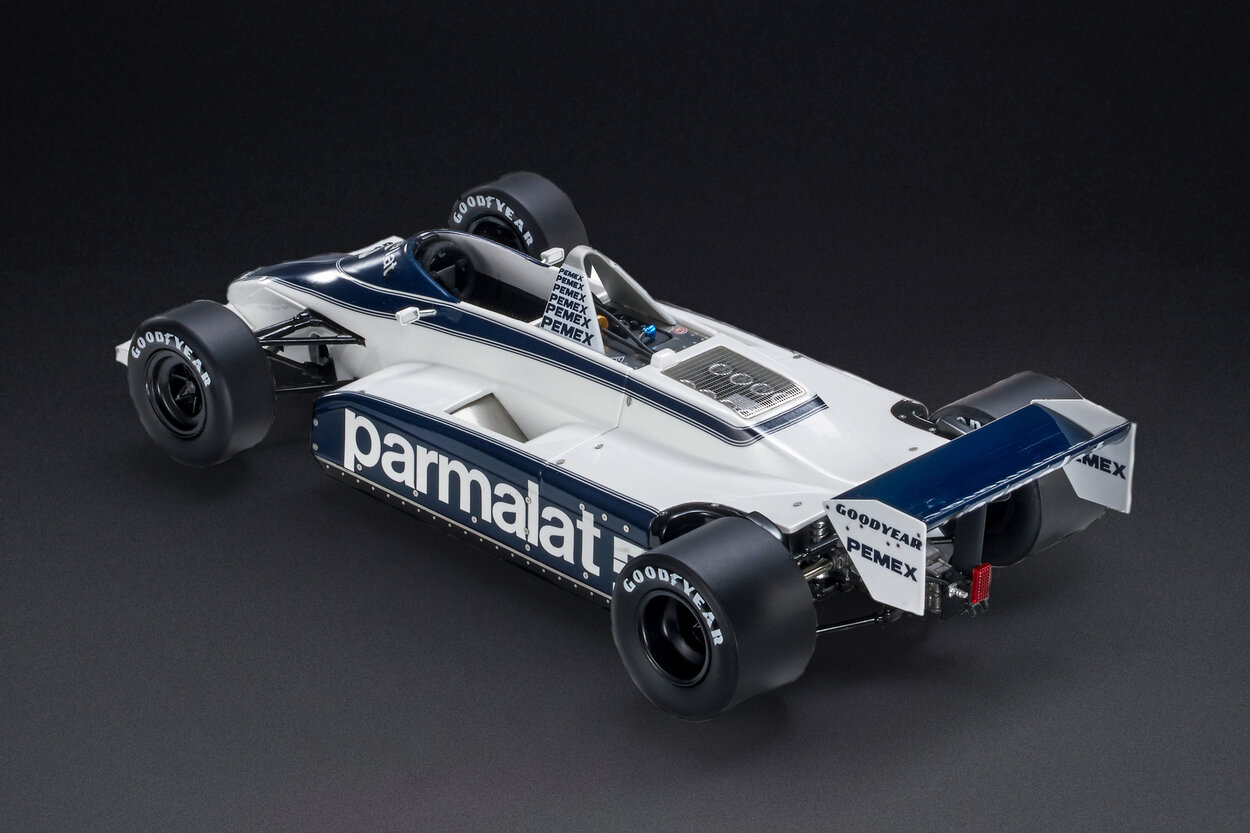Brabham BT49C
The Brabham abandons the Alfa Romeo engine with which it had attempted the adventure in Formula 1 in the second half of the seventies, returning to the old but always reliable 8-cylinder Ford-Cosworth and wins its first world title. In the end, it’s as simple as that.
The BT49C is born in the middle of the 1979 season and in contraposition to the car with which the Alfa Romeo-powered Brabham is racing that year. The BT48 equipped with the brand new 12-cylinder Alfa Romeo engine instead of the bulky, heavy, and thirsty boxer engine continues to not provide the guarantees that Bernie Ecclestone, owner of Brabham, demands. Thus, its ingenious designer, South African Gordon Murray, begins to think about a new car powered by the 8-cylinder Ford Cosworth.

Drivers:
Nelson Piquet: The Brazilian takes the BT49 to its debut race and to six victories of the seven Grand Prix races that the car designed by Gordon Murray claims between 1980 and the beginning of 1982. Nelson stands on the top step of the podium in Long Beach, Zandvoort, and Monza in 1980, and in Buenos Aires, Imola, and Hockenheim in 1981. At the end of the season, he becomes world champion. It’s his first personal title and the first for Brabham.
Niki Lauda: The BT49 is the last car on which the then two-time world champion races before abandoning Formula 1 for the first time. Late September ’79, free practice for the Canadian Grand Prix in Montreal. After a few laps, Niki returns to the pits and suddenly announces that he no longer wants to race.
Riccardo Patrese: The young Italian driver arrives to Brabham in 1982. In the five races he competes with the BT49C, he secures a victory in Monte Carlo, a second place in Montreal, and a third in Long Beach.
Our model cars:

The BT49 is born, a car with a monocoque made of aluminum honeycomb. It is shorter, lighter, but above all more manageable and reliable than its Alfa Romeo-powered sister. The smaller engine and the smaller tanks, given the lesser thirst of the Ford-Cosworth, allow Murray to fully exploit the sides to obtain that ground effect which in 1979 is now an indispensable factor in any Formula 1 car.
The BT 49 debuts in the penultimate race of the season, the 1979 Canadian Grand Prix, the same race in which Niki Lauda announces his (first) retirement from racing. The following season is quickly successful. In the fourth race, at Long Beach, the BT49B wins its first race. In 1981, the C version arrives – very few modifications with a view to new regulations – and so does the first world title in the team’s history. It remains in service until the early races of the 1982 season, winning seven of the 38 Grand Prix it participates in.

